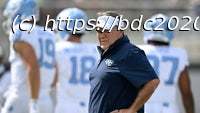The House Financial Services Committee passed its version of repeal-and-replace for Wall Street regulation.
On Thursday, the House Financial Services Committee approved the Final Choice Act, thus helping President Donald Trump move one step closer to his long-stated goal of repealing the Dodd-Frank Act. The bill now must be passed by the full House and Senate before becoming law.
The Choice Act —which stands for Creating Hope and Opportunity for Investors, Consumers, and Entrepreneurs—is in some ways a repeal-and-replace initiative for the financial sector. For instance, the bill would do away with Title II of Dodd-Frank, the section that created the Orderly Liquidation provision and provides a government guided wind-down process for banks facing bankruptcy. In its place, Republicans would create a new section of the bankruptcy code specifically targeted at large financial institutions.
But overall, the Choice Act is heavier on repeal than it is on replace. The Act would do away with Title IV of Dodd-Frank, which gives the Financial Stability Oversight Council (FSOC) the ability to designate financial organizations as systemically important and impose more rules and regulations on them. The Act would also call for the dissolution of FSOC, repeal the portion of the law responsible for the Volcker Rule (which a major bank just got caught breaking for the first time) , and kill the fiduciary rule once and for all. The bill would allow big banks to skip out on a slew of oversight they’ re subject to now if they agree to hold high levels of capital. It would fundamentally change the role and scope of the Consumer Financial Protection Bureau, removing its authority to act upon practices it deems “unfair, deceptive, or abusive acts, ” and making it subject to Congressional oversight—which would leave it vulnerable to being completely defunded in the future.
Given the two executive orders issued by the President on Dodd-Frank, the constant protest to Dodd-Frank from the GOP, and the court cases filed alleging that the CFPB’s structure was fundamentally unconstitutional, neither the content of the Choice Act nor the fact that it was passed by House Republicans should come as much of a surprise. Republicans have long blamed Dodd-Frank and its requirements for the lackluster economic growth seen in the recovery and the years following. Donald Trump himself, before issuing his first executive order to look into Dodd-Frank, said that many friends of his “with nice businesses” had trouble getting loans due to Dodd Frank.
Democrats have already attempted to introduce several amendments to the Choice Act, and will likely fight it vigorously. While many concede that Dodd-Frank is certainly imperfect, they worry that repealing the complicated bill could make the financial sector more risky and unstable than it was before the Great Recession.
While the Choice Act, especially in its current form, may never actually make it into law, it helps provide both momentum and framework for the administration’s ultimate goals of widespread deregulation. The first review of Dodd-Frank by the Treasury Secretary Steven Mnuchin is due in June. After that, the administration is expected to give more details on its plans for deregulating the financial sector and what, if anything, will replace the existing framework.






